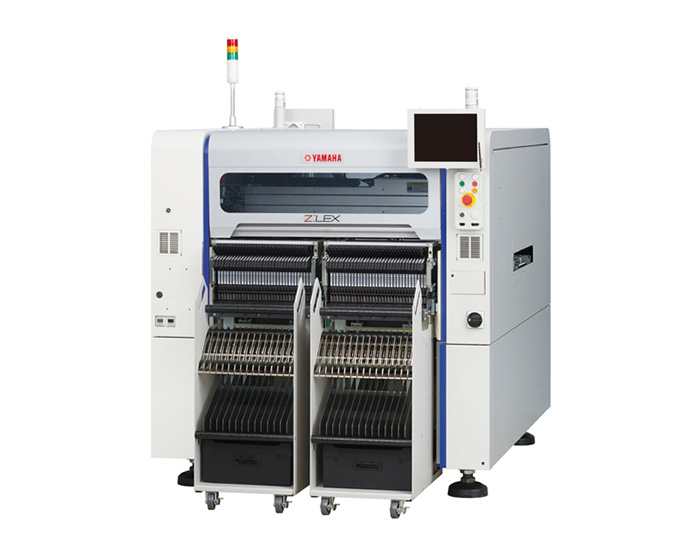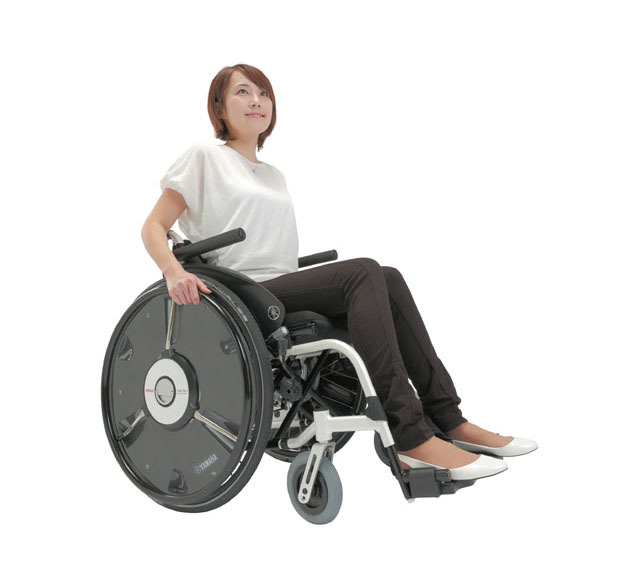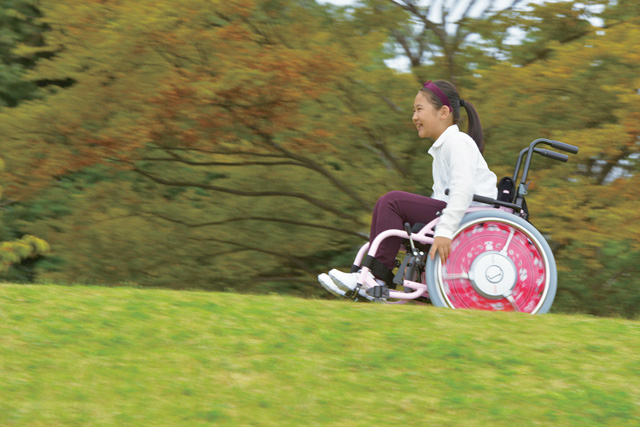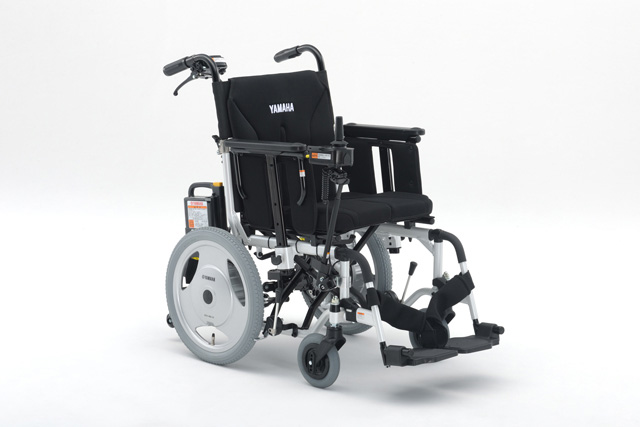From Surface Mounters to Electric Wheelchairs
介绍雅马哈发动机技术背后的故事。

这一切都始于1983年的东京。这是雅马哈发动机第一次以参展商的身份参加国际机器人展,并有自己的展位,当时有制造商询问雅马哈是否考虑制作芯片安装设备在印刷电路板上。根据该要求,雅马哈在公司内设立并维持了一个部门(现为智能机械事业部),该部门生产“表面贴装机”,用于在印刷电路板和外围设备上安装电气/电子部件。直到今天,该部门继续满足电子行业客户的需求,以确保他们在日本和海外的生产线一年 365 天、一天 24 小时不间断工作。雅马哈从这项业务中获得的电子控制领域的专业知识已用于开发新的雅马哈产品,例如修改和调整我们电动助力自行车的 PAS 单元以用于我们的 JW 系列电动轮椅。通过这种方式,它已成为一个不断扩展的技术领域。
作为一家最初作为摩托车制造商成立的公司,雅马哈发动机于 1974 年开始研究和开发工业机器人,旨在提高制造和装配过程的精度。两年后的 1976 年,第一批 Yamaha 开发的零件装配机器人在我们的生产线上投入使用。这一成就促成了我们于 1981 年成立工业机器人业务,两年后,这一新尝试的产品首次在上述国际机器人展览会上展出。开发第一批工业机器人所获得的核心技术使 Yamaha 能够扩展到用于将芯片和其他电子部件连接到印刷电路板的表面贴装机的开发。
简而言之,制造印刷电路板的过程可以比作制作和烘烤比萨饼。你把酱汁涂在披萨面团上,放上配料,然后在烤箱里烤。表面贴片机是一种“将配料放在比萨饼上”的机器。然而,表面贴装机必须能够以非常高的速度(几十毫秒)和令人难以置信的精度(几十微米)将元件贴装到电路板上。实现这种性能所需的核心控制技术是“视觉控制图像处理技术”和“伺服电机控制技术”。
视觉控制图像处理包括用数码相机拍摄元件贴装的超高速图像,然后处理图像以确定部件的类型,并检查其贴装(定位)的准确性和是否正确贴装到董事会。这意味着只需几毫秒即可验证以微米为增量的高精度部件放置。回到比萨类比,它的作用是确定各种配料是否已放置在馅饼上所需的位置。
表面贴装技术(SMT)上下文中的伺服电机控制技术意味着具有控制程度以拾取比芝麻还小的芯片(在0.2毫米×0.1毫米的范围内)并将其放置在电路板上的确定位置具有高水平的定位精度。使用吸嘴吸取芯片,然后使用多个伺服电机以无缝协调的方式将芯片输送和放置在 3D 过程中,几乎没有时间延迟。这个复杂动作的重点是如何协调喷嘴和伺服电机的操作,使它们同时工作。最新的电子控制器能够在不到一毫秒的时间内协调在近 100 个不同运动轴上运行的电机。 Yamaha 领先的表面贴装机产品“Z:LEX YSM20”(#1)每小时能够贴装 90,000 个芯片。我们主要贴片机产品的所有数码相机、控制器和其他核心技术都是内部开发的。
Expanding the Roles of Yamaha Electronic Control Technology
Some examples of products born from the control technology in Yamaha surface mounters are the JW Swing (#2) complete built up (CBU) electrically power-assisted wheelchair and the JWX-2 attachable power-assist unit for wheelchairs. Using technology from Yamaha’s PAS electrically power-assisted bicycles, these power-assisted wheelchair products respond to force applied by the user to the main wheel hand rims to apply a corresponding drive force from an electric motor to help propel the wheelchair. However, while bicycles have a single drive wheel, wheelchairs have two separate drive wheels. This difference brings in the need to coordinate the movement of the two wheels. Also, unlike a bicycle where the feet of the rider are always on the pedals, moving a wheelchair forward involves an interval when the hands must leave the rims at the end of a push to reset the user’s grip for the next push. There is also a difference in the amount of force applied and timing of the pushes on the left and right hand rims to maneuver the wheelchair. As a result, smooth movement cannot be achieved simply by applying the assist force as it is. So, Yamaha developed a sophisticated method of control to coordinate the assists and make the wheelchair move naturally. The assist force is programmed to make a smooth transition when the user’s hands leave the rims to re-grip for the next push and to enable smooth motion going up or down hills. The intricate details of this control draw on the servomotor technology attained from Yamaha’s development of industrial machinery.
The Yamaha electric wheelchair lineup is also popular for its fully electric-powered models operated with a joystick (#3), but power-assisted models like the JW Swing are aimed at helping older users who may have become weaker with age to maintain and increase the muscular strength they have. The “JW” in the product name stands for “Joy Wheel” and it is a direct expression of the Yamaha developers’ desire to see the products’ users experience the joy of using their own strength to get out and enjoy the freedom of self-mobility.



